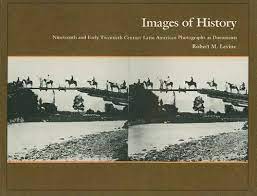Description
pp. 216, “In this work Robert M. Levine undertakes two separate and important tasks: to provide the first overview of the history of photography in Latin America until the advent of the cheap cameras that permitted mass photography, and to analyze the photographic record for clues to the use of the images as historical documents.
Levine has woven together an account of the development of photographic equipment and processes, with the artists and entrepreneurs who actually took the pictures, and places the emergence of photography firmly in the historical context of Latin American societies.
Treating the photographs themselves—some 225 in all—Levine develops criteria for questions we can ask of the photographs in an attempt to extract emotional, psychological, and personal information, as well as the more obvious material evidence. This is an often subjective process, one that can lead to differing results, and observers may well come to conclusions departing radically from those of the author. But this may well be one of the most important functions of an innovative work, the creation of controversy that stimulates forward motion in a discipline.”






